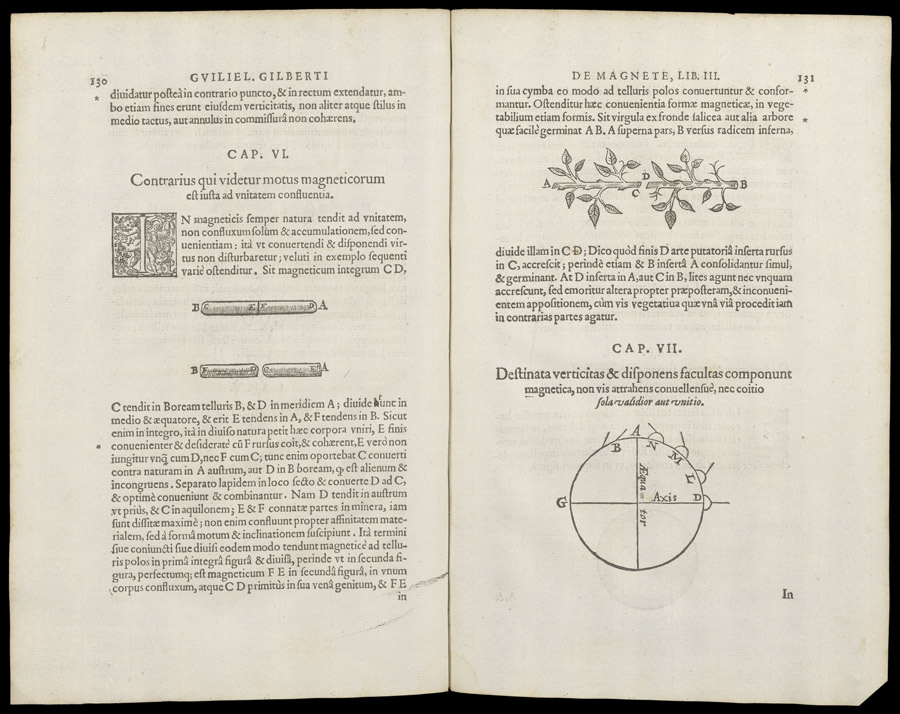Gilbert: Magnetic Disagreements
Thursday, May 5th, 2011But here we notice another curious fact … * [ZB Magnet 2] William Gilbert, De Magnete (London: Petrus Short, 1600), Zentralbibliothek Zürich, Alte Drucke und Rara, XVI.28, p. 133.
But here we notice another curious fact … * [ZB Magnet 2] William Gilbert, De Magnete (London: Petrus Short, 1600), Zentralbibliothek Zürich, Alte Drucke und Rara, XVI.28, p. 133.
Magnetic needles, pointers, rods or wire have a tendency toward the earth’ s centre, the so called magnetic dip or inclination. Inclination variers. Here a magnetic wire in a cork shows its dip in a bowl filled with water. [ZB Magnet 2] William Gilbert, De Magnete (London: Petrus Short, 1600), Zentralbibliothek Zürich, Alte Drucke und Rara, XVI.28, p. 203.
*System for Prediction of Environmental Emergency Dose
SPEEDI, designed to predict the dispersal of radioactive materials based on forecasts by ERSS, is likely to have delayed the effective evacuation of residents in Fukushima Prefecture. The systems’ failure casts doubt on the government’s disaster-prevention policy, which said that the systems should be used to analyze and predict the amount and spread of radioactive material into the environment during a nuclear crisis.
Long loadstone with versoria. Versoria deviate according to the distance from the middle or equator of the loadstone (CD). The deviations are greater the greater the distance of the versoria is from the equator. [ZB Magnet 2] William Gilbert, De Magnete (London: Petrus Short, 1600), Zentralbibliothek Zürich, Alte Drucke und Rara, XVI.28, p. 164.
[ZB Magnet 2] William Gilbert, De Magnete (London: Petrus Short, 1600), Zentralbibliothek Zürich, Alte Drucke und Rara, XVI.28, p. 155.
AB is a terrella imperfect in parts and of unequal power on the circumference. The needles H and L vary, because they are placed in a decayed part and incline towards the sound parts (where the needles C, D, E, F are placed). Needle O does not deviate because it is placed in the middle of the decayed part.
Iron will obtain north-south direction when it is hammered and heated properly: “Let the smith stand facing north, with back to the south, so that as he hammers the red-hot iron it may have a motion of extension northward.” (Gilbert, De Magnete (translated by Mottelay) p. 211ff) [ZB Magnet 2] William Gilbert, De Magnete (London: Petrus Short, 1600), Zentralbibliothek Zürich, Alte Drucke und Rara, XVI.28, p. 139.

[ZB Magnet 2] William Gilbert, De Magnete (London: Petrus Short, 1600), Zentralbibliothek Zürich, Alte Drucke und Rara, XVI.28, p. 130f.